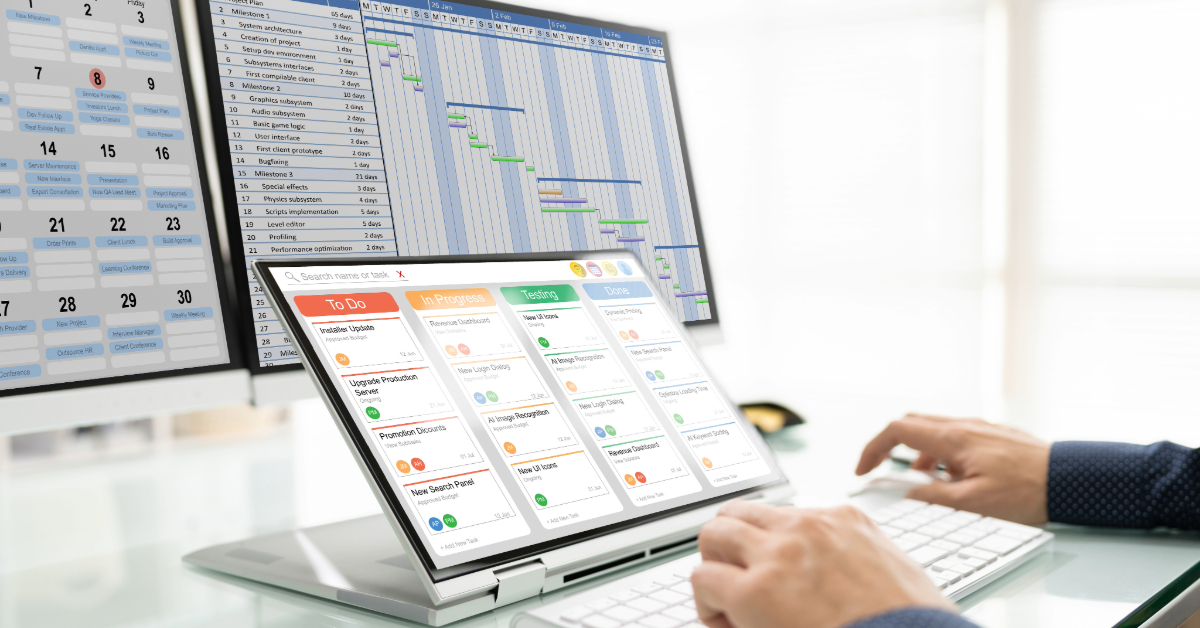Key Takeaways
- Gain a competitive advantage by adopting a remote management model that lowers operational costs for your MEP firm.
- Implement specialized project management and communication software to maintain organization across remote MEP teams.
- Support your team’s development and well-being with flexible online training and consistent weekly check-in calls.
- Learn how modern digital tools enable construction and engineering firms to manage complex projects from anywhere.
The impact of the 2020 global pandemic has changed the way working life looks for many of us, showing everyone just how possible remote working is and normalizing this new approach.
The graph below shows that the number of remote workers has started to stabilize as many choose to make working remotely a permanent decision. This leaves businesses with no choice but to adapt to the growing demand and embrace the new normal.

As well as offering an improved work-life balance for employees, companies can save up to $10,600 per employee who works remotely – it’s no wonder that more and more businesses are adapting to this model.
The construction and engineering industries are also seeing changes. Although on-site work is given for laborers in the field, the rise in teams now working remotely is undeniable.
With so many digital tools and modern technologies improving everyday operations for mechanical, electrical, and plumbing (MEP) teams, businesses are now able to maintain operational efficiency without necessarily working together in person.
Adapting to this way of working offers businesses the option to carry out projects in a more flexible manner, managing the team virtually and calling upon laborers when they are needed.
Best Practices for Managing Remote MEP Teams
Becoming a remote MEP team is bound to entail some teething issues, especially for those who have spent their careers working on-site, but here are some of the best practices that can help make managing a remote team a smooth process:
Use project management systems
A MEP project requires aligning various laborers and comes with a level of complexity.
Especially considering that the team is not going to be based in one central location, the addition of a project management system is a no-brainer.
Using specialized construction workforce management software allows a project to be centrally managed with the help of modern technology features. By handling classic HR processes, breaking down the project timeline, and managing budgets, the entire process is bound to be much more efficient and well-organized.
Attend online training courses
MEP practices are forever changing as new technologies arise and regulations change. This means regular training is essential to avoid using outdated techniques and falling behind the competition.
Nowadays, there are various online courses that can be completed from the comfort of the participants’ own homes.
Since different workers can attend courses that suit their role, the content will be more relevant to them and they will be able to go through the materials at their own pace and revisit any areas that they are not confident with.
This approach is typically preferred among workers as it gives them more flexibility to attend courses that suit their professional goals without the barrier of location.
Utilize communication tools
Strong communication is important at the best of times, but when a team is working remotely, it is crucial. If a team’s only form of communication is WhatsApp texts and group email chains, the likelihood of miscommunication and human error grows significantly.
Introducing a communication tool means everyone within the team can send messages, host calls, and share files using the same platform. Groups can also be set up, whether that be per project, per team, or even with clients, so conversations can be kept well organized.
Some popular communication tools for remote companies are Slack and Microsoft Teams. They are both designed to cater to remote teams and can be used on various device types.
Schedule weekly check-ins
If a team is working remotely and does not have the typical interactions that you would get when working on a site or in an office, working relationships will become weak. This can lead to poor communication and an undesirable working environment.
Hosting weekly check-ins, whether that be one-on-one calls between a manager and an employee or as a group call, will provide workers with the opportunity to discuss the week.
As an MEP team, being able to get regular updates on the progress of a project and the expectations for the week ahead is bound to create a strong teamwork dynamic and improve overall productivity.
Manage timesheets virtually
When MEP workers are hopping from site to site and billing in different ways, it can be tricky to keep on top of payroll.
Time management tools are widely used within remote businesses as they allow each employee to submit their own hours. It will require everyone to log into their own personal dashboard at the end of each day and record the number of hours they have spent on each project.
As well as ensuring that each laborer gets paid fairly, this will help the organization accurately bill clients based on the work that has been completed.
Embracing Remote Working in MEP Teams
Construction and engineering companies are no exception from the rapid rise in remote working since the global pandemic, so it’s about time more businesses adapted to the new normal.
With the help of digital tools and technologies that are designed to help a business manage their employees virtually, MEP teams can work more flexibly to suit the needs of a project.
Although going from on-site working to remote working may require some changes and encounter a few teething issues, adapting to the modern world of work will help a business maintain a competitive edge in the field and continue to thrive.




